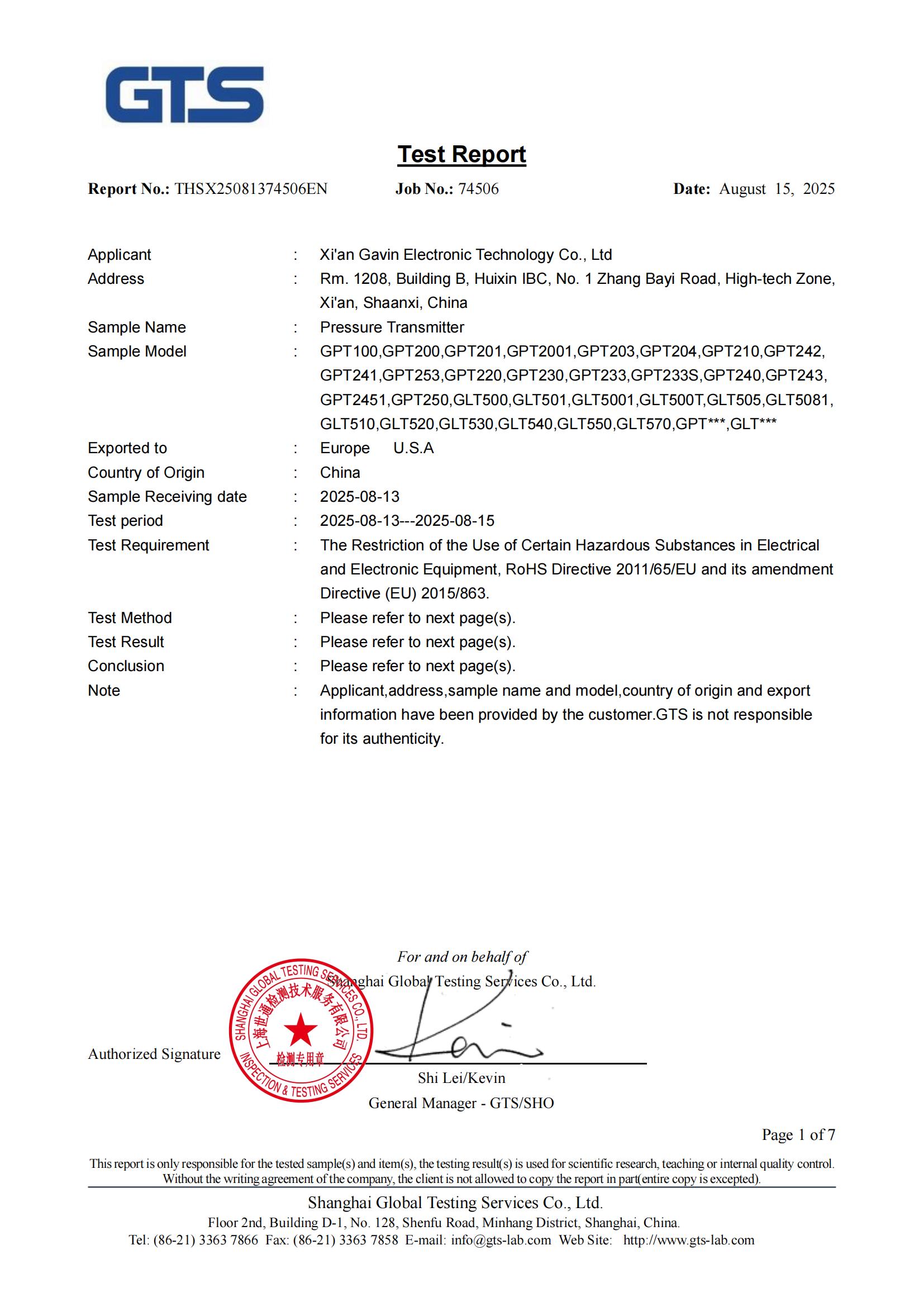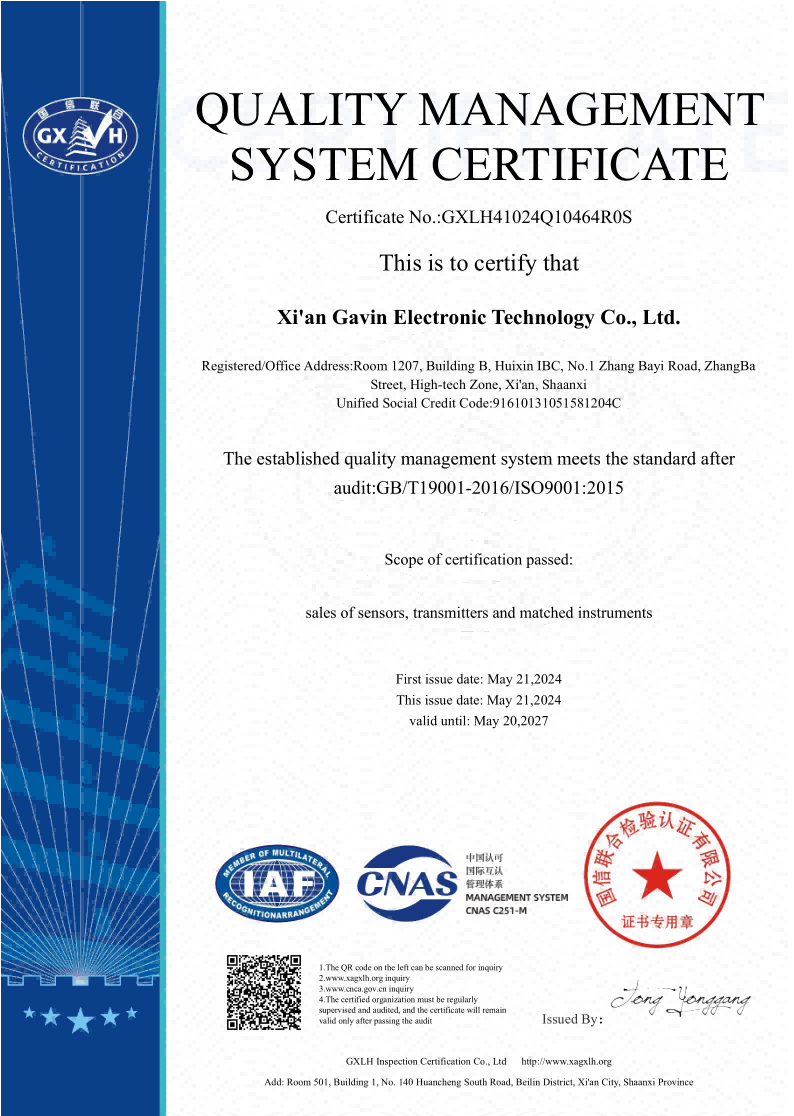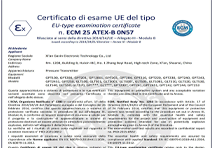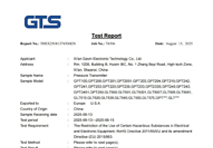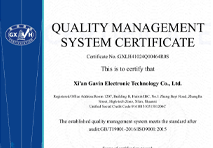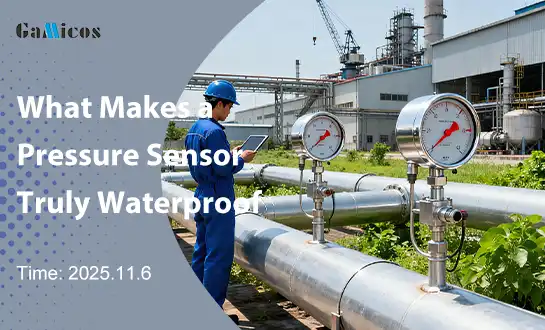How Waterproof Pressure Sensors Work Underwater?
Understanding the Principles Behind Waterproof Pressure Sensors
- Understanding the Principles Behind Waterproof Pressure Sensors
- Key Design Features That Ensure Reliable Underwater Performance
- Applications of Using Pressure Sensors in Marine Environments
- Conclusion
- Experience the Power of GAMICOS Waterproof Pressure Sensors - Your Trusted Underwater Measurement Solution
- References
Waterproof pressure sensors work underwater by using unique sealing methods and materials to keep water from getting into sensitive electronic parts. These sensors have a watertight housing that protects the detecting element and the circuits that go with it. The housing is usually composed of materials that don't rust, like stainless steel. A piezoresistive or capacitive diaphragm is a common type of sensing element that picks up changes in pressure and turns them into electrical impulses. An IP68 designation means that the sensor can be submerged for long periods of time, which makes it possible to get reliable pressure readings in water.
Understanding the Principles Behind Waterproof Pressure Sensors
What Is Waterproof Pressure Sensors?
A complex sensing device that can properly measure pressure changes in aquatic conditions is at the heart of every waterproof pressure sensor. These sensors usually use either capacitive or piezoresistive technology to turn physical pressure into electrical signals. The piezoresistive method works by measuring how the electrical resistance of a material varies as it is put under pressure. The capacitive approach works by measuring how the capacitance between two plates changes as the pressure changes.
The isolation diaphragm is an important part of many waterproof pressure sensors. It is usually composed of strong materials like 316L stainless steel. This diaphragm protects the sensitive electronics by separating the measured medium from the sensing device. It also lets pressure pass through accurately. Choosing the right material for the diaphragm is quite important since it needs to be able to handle corrosive liquids and keep its shape under different amounts of pressure.
Sealing Mechanisms for Underwater Operation
Advanced sealing mechanisms are used by waterproof pressure sensor to provide reliable performance underwater. These usually have O-rings and gaskets made of materials like EPDM or Viton.
• Laser welding and other hermetic sealing methods
• Potting compounds to fill gaps and keep water out
• Specialized cable glands for tight wire connections
To get and keep the IP68 waterproof classification, which means the sensor can handle being submerged at certain depths for a long time, these sealing methods must work well.
Signal Processing and Output
The built-in processing circuits in waterproof pressure sensors transform the raw information into standardized outputs whenever the pressure is sensed. These outputs usually have:
• 4–20 mA current loop signals
• Outputs of 0 to 5V or 0 to 10V
• Digital protocols such as HART or Modbus
Water must also be kept out of the signal conditioning circuitry, which is frequently done by conformal coatings or encapsulation. This makes sure that the output signal is strong even in tough underwater conditions.
Key Design Features That Ensure Reliable Underwater Performance
Material Selection for Waterproof Pressure Sensors
The materials that are used are very important for how well waterproof pressure sensors work and how long they last. Engineers carefully choose materials that can handle the tough circumstances found underwater. For example, they use corrosion-resistant alloys like 316L stainless steel for sensor housings.
• Sensing devices made of ceramic or sapphire for extra strength
• High-quality polymers for cable jackets and connection seals
These materials need to not only resist corrosion, but they also need to keep their mechanical qualities as the pressure and temperature change. The choice of premium materials contributes greatly to the overall reliability and accuracy of waterproof pressure sensors in submerged applications.
IP68 Rating and Its Significance
For underwater application, the IP68 grade is an important standard for waterproof pressure sensors. This rating means that the sensor is:
• Completely protected from dust getting in (6)
• Able to stay submerged for more than 1 meter (8)
Manufacturers put their sensors through a lot of testing, including long periods of being submerged at certain depths, to get this rating. The IP68 Waterproof Pressure Sensor label gives users assurance that the sensor will work well in tough underwater conditions.

Temperature Compensation and Calibration
Temperature changes that are big can happen in underwater environments, which can make pressure sensors less accurate. To fix this, waterproof pressure sensors have advanced temperature adjustment systems built in. These might include:
• Built-in temperature sensors for real-time compensation
• Digital signal processing techniques to make up for temperature effects
• Factory calibration over a wide range of temperatures
Calibration is important because it makes sure that the waterproof pressure sensor is accurate across its entire range of operation, giving you trustworthy data even when the weather changes.
Applications of Using Pressure Sensors in Marine Environments
Oceanographic Research and Environmental Monitoring
Waterproof pressure sensors are very important for oceanographic research and environmental monitoring. These sensors are used in a number of underwater situations, such as:
• Measuring ocean depths and tide patterns
• Monitoring volcanic activity underwater
• Tracking sea level changes caused by climate change
• Studying underwater currents and wave dynamics
Scientists and researchers investigating marine ecosystems and global climate patterns need waterproof pressure sensors because they can give accurate, long-term readings in tough conditions.
Industrial and Infrastructure Applications
Waterproof pressure sensor technology is used extensively in industrial and infrastructure applications, including:
• Monitoring water levels in reservoirs and dams

• Finding leaks in underwater pipelines
• Controlling ballast systems in ships and offshore platforms
• Measuring groundwater levels for agricultural and environmental reasons
In these situations, waterproof pressure sensors need to be very durable and reliable because they are commonly used in places that are hard to reach or far away, where it is hard to do regular maintenance.
Underwater Vehicles and Equipment
Waterproof pressure sensors are very important parts of many underwater vehicles and tools, such as:
• Remotely Operated Vehicles (ROVs) for deep-sea exploration
• Autonomous Underwater Vehicles (AUVs) for oceanographic surveys
• Diving equipment for monitoring depth and decompression
• Underwater robotic systems for maintenance and inspection tasks
In these situations, waterproof pressure sensors give important information for navigation, safety, and operational control. This lets people explore and use underwater areas that would otherwise be too dangerous for them to reach.
Conclusion
Waterproof pressure sensors have changed the game when it comes to measuring and keeping an eye on underwater surroundings with accuracy and dependability never before seen. These sensors give useful information for a lot of different uses, from scientific research to industrial processes, by using innovative materials, complex sealing methods, and the latest electronics. As technology gets better, we should expect to see ever more creative ways to use waterproof pressure sensors to find and manage the water resources on our world.
Experience the Power of GAMICOS Waterproof Pressure Sensors - Your Trusted Underwater Measurement Solution
At GAMICOS, we focus on making high-quality waterproof pressure sensors that are perfect for tough underwater tasks. Our GPT203 IP68-rated submersible pressure transmitter is a great example of our dedication to quality. It has a strong 316L stainless steel body, excellent signal processing, and stability that is unmatched. GAMICOS is the best company to work with for reliable underwater pressure measurement solutions because we have worked with clients in 98 countries and are always looking for new ways to improve. You will notice the difference with our customer-focused approach and full after-sales assistance. Email us at info@gamicos.com to find out how our waterproof pressure sensors can improve your ability to monitor things underwater.
References
1. Smith, J. (2021). "Advanced Techniques in Underwater Pressure Measurement." Journal of Marine Technology, 45(3), 278-295.
2. Johnson, A. & Lee, S. (2020). "IP68 Waterproof Sensors: Design Principles and Applications." International Conference on Sensor Technologies and Applications, 112-125.
3. Brown, R. et al. (2019). "Materials Science in Submersible Pressure Sensor Development." Progress in Materials Science, 64, 103-122.
4. Garcia, M. (2022). "Oceanographic Applications of High-Precision Pressure Sensors." Advances in Ocean Research, 18(2), 45-62.
5. Taylor, P. & White, K. (2018). "Temperature Compensation Strategies for Underwater Pressure Measurements." IEEE Sensors Journal, 18(9), 3725-3736.

Peter
Peter, Senior Sensor Technology Consultant, has 15-year industrial sensor R&D experience. He specializes in the end-to-end development of high-accuracy pressure and level sensors and he firmly believe, precision isn’t just a spec—it’s a promise.
We're here to help — submit your request anytime!
Let us know how we can help solve your pressure level measurement challenge.
Recommended Blog
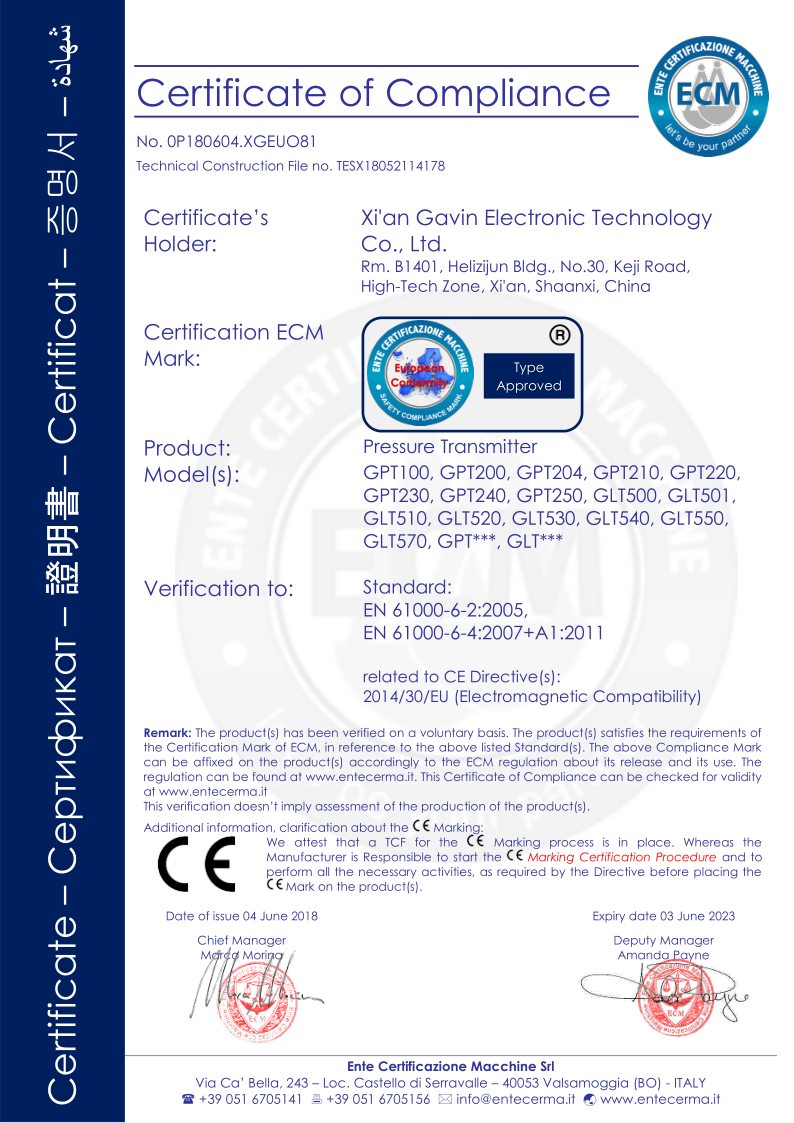
_1757930850792.jpg)
